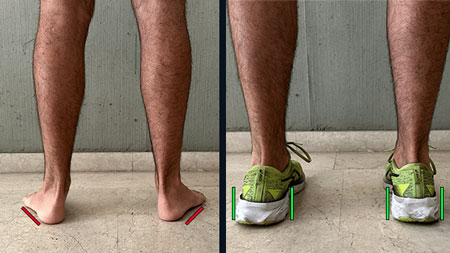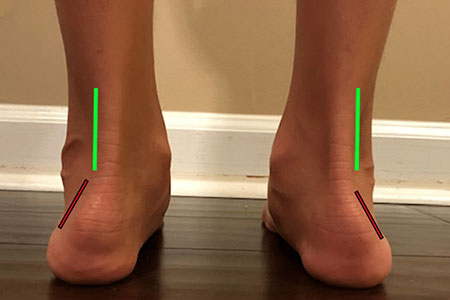Best Shoes for Toddlers with Weak Ankles — Firm Heel Counter and Extra Support Right Below the Heels!
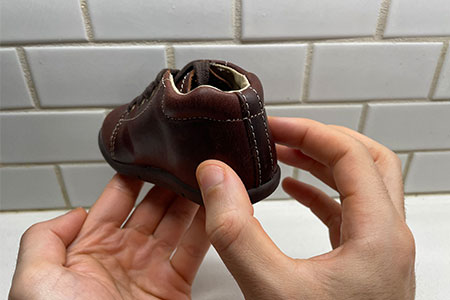
Has your toddler been diagnosed with a foot condition that requires shoes with extra ankle support? The first seven years of a child’s life are often referred to as the “golden years of treatment opportunity.” Supportive shoes for toddlers with weak ankles can lead to permanent structural improvements, improving your toddler’s foot posture, stability, and preventing foot and leg pain.
Some pediatricians recommend not to intervene until the child reaches a certain age (usually the age of 5), as the condition might resolve on its own. However, taking the “wait and see approach” might only lead to your toddler’s condition getting worse. It’s not a matter of age. The earlier you intervene, the higher the chances of improving your toddler’s walking gait, overall posture, and quality of life.
My Experience Fitting Toddlers in Supportive Shoes
When I evaluate a child’s foot and notice something wrong, I don’t wait and let the condition get worse. Toddlers with weak ankles are not going to improve their alignment without help.
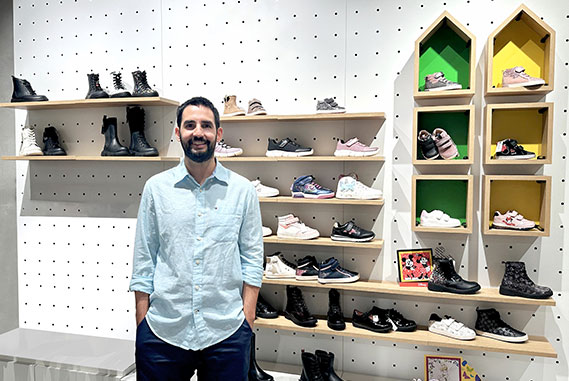
Each child’s journey is unique, and finding the perfect shoe can significantly enhance their physical development and overall well-being. My mission is to help parents navigate the often overwhelming world of children’s footwear and provide personalized recommendations based on each child’s unique needs.
Key Features of Shoes for Toddlers with Weak Ankles
1. Firm Heel Counters: A firm heel counter is essential for providing stability and support to a toddler’s ankle. This feature helps maintain proper alignment and prevents the foot from rolling inward or outward, which can lead to ankle sprains and other injuries.

2. Targeted Heel and Ankle Support: A well-cushioned shoe can aid in distributing weight evenly across the foot, reducing strain on the ankles.
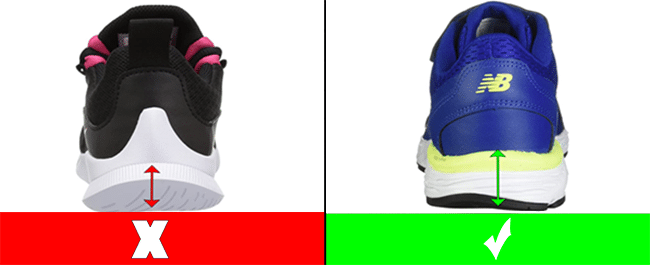
3. Flexible Soles: While support is crucial, it’s also important for shoes to have flexible soles. This flexibility allows for natural foot movement and encourages proper muscle development.

One of the most rewarding aspects of my job is witnessing the transformation in toddlers’ foot posture and walking stability after switching to supportive shoes.
Before and After: The Impact of Supportive Shoes
I am a firm believer that the correct type of shoes can make the world of difference when it comes to improving a toddler’s walking gait, stability, and overall posture.
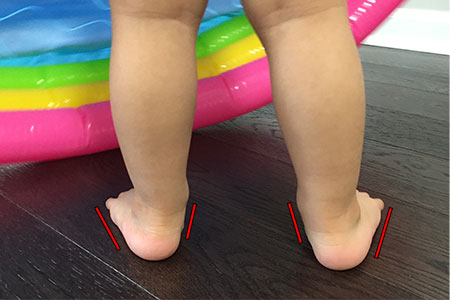
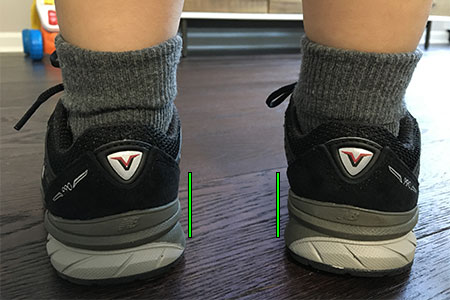

What Are the Best Shoes for Weak Ankles?
Our goal should be to correct the excessively tilted heels back into a more appropriate alignment while leaving the forefoot active and operative, meaning that the shoes need to be supportive but lightweight and flexible at the same time. By fitting a child in supportive shoes all we are doing is giving the child structural support. I want to clarify that by doing this we are not making the muscles weak.
I want to clarify that the shoes I recommend below will support your toddler’s feet but allow the foot muscles to develop on their own. Disclosure: Some links in this post may be affiliate links and we may receive a small commission (at no extra cost to you) when you click our links and make purchases.
Best Shoes for Toddlers with Weak Ankles for Better Balance
Here are some top-rated shoes that offer the support and features needed for toddlers with weak ankles, and they can fit different foot shapes such as medium (M), wide (W), and extra wide (XW) feet.
1. Shoe Style 990v6 by New Balance
These toddler ankle support shoes provide a robust outsole that helps distribute weight evenly across the foot and reduces strain on the muscles and joints. The downside that many parents complain about is the high price tag.
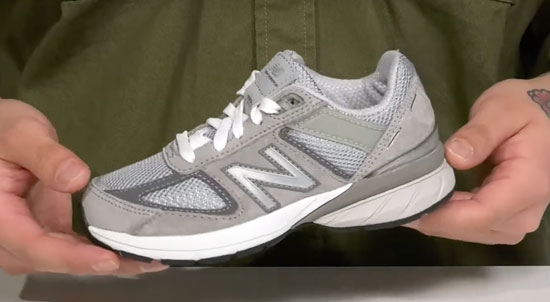
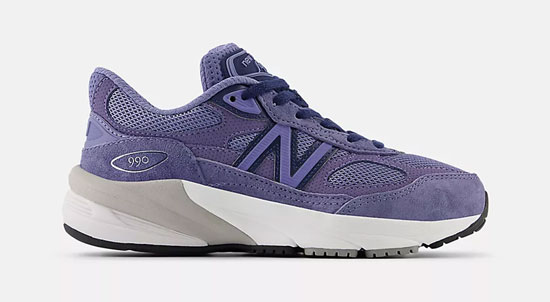

Key Features
- You can order the 990v6 with laces on the New Balance website, Amazon, or Zappos.
- Available in medium, wide, and extra wide widths.
- Also available in pink and navy blue.
- There is also a Velcro version of these shoes available in navy blue and pink.
- I suggest getting this shoe a half size larger than your toddler’s current foot size.
2. Shoe Style Gabi by Memo (Orthopedic Shoe)
These orthopedic shoes with ankle support are ideal for toddlers with weak ankles as they are specifically designed to improve foot posture and comfort. The higher price point is a common complaint parents have but the investment in orthopedic shoes is often justified by their specialized design and effectiveness in addressing flat feet and weak ankles.


Key Features:
- You can order the shoe style Gabi by Memo on Amazon.
- Fits medium and wide feet.
- Also available in a Mary Jane style.
- I suggest getting this shoe a half size larger than your toddler’s current foot size.
3. Shoe Style Elliott by Stride Rite
These high-top ankle support shoes by Stride Rite offer excellent support and a comfortable fit, making them a top choice for toddlers with weak ankles. This shoe is affordable and despite the limited color choices, the Elliott shoes are celebrated for their supportive qualities and comfortable fit.
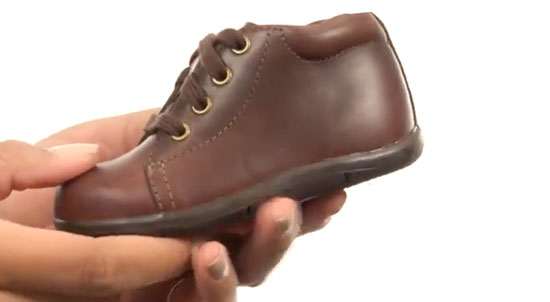
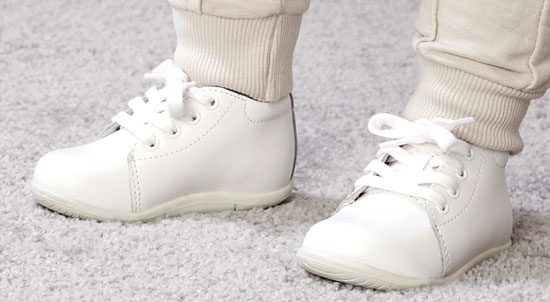
Key Features:
- You can order the shoe style SRT Elliot by Stride Rite on Amazon or Zappos.
- Available in medium, wide, and extra wide widths.
- I suggest getting this shoe a whole size larger than your toddler’s current foot size.
4. Shoe style 574 by New Balance
This New Balance shoe combines style with functionality. It offers solid support and cushioning, making it suitable for toddlers with flat feet and weak ankles. The shoe is offered at a lower price point.
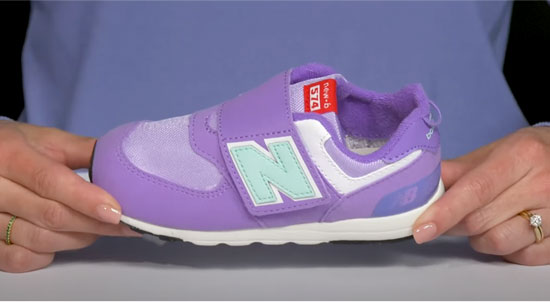
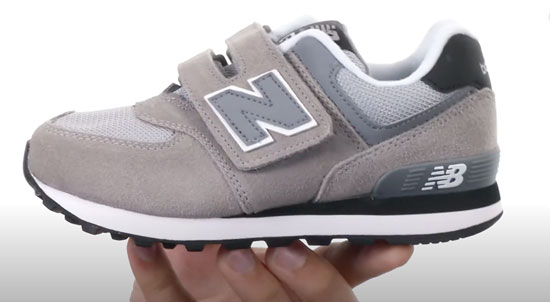
Key Features:
- Order the shoe style 574 New-b V1 by New Balance on Amazon or the New Balance website.
- Available in medium, wide, and extra wide widths.
- I suggest getting this shoe a half size larger than your toddler’s current foot size.
5. Shoe Style Tracks by Timberland
These high top toddler shoes are ideal for outdoor activities and won’t compromise on foot stability or comfort, but they are slightly heavier than my other shoe recommendations.
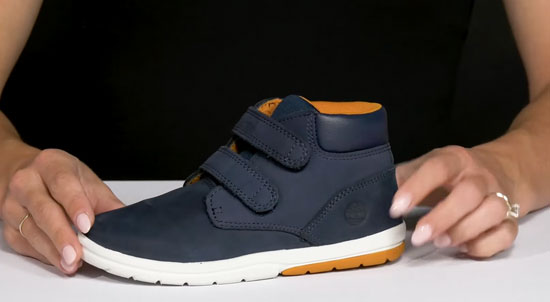

Key Features:
- Order the shoe style Tracks by Timberland on Zappos or Amazon.
- Fits medium and wide feet.
- Water-friendly
- I suggest getting this shoe a whole size larger than your toddler’s current foot size.
6. Shoe Style Fresh Foam Arishi v4 by New Balance
This is a versatile shoe that provides a soft and comfortable fit while supporting your toddler’s flat feet and weak ankles. Families appreciate how this shoe is offered at a very reasonable price.
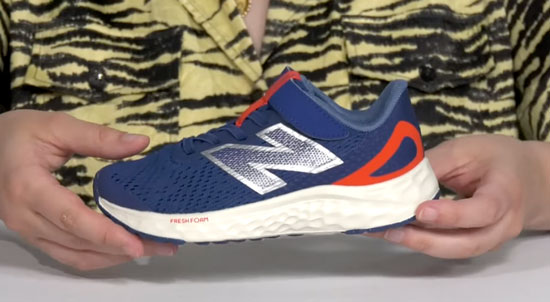
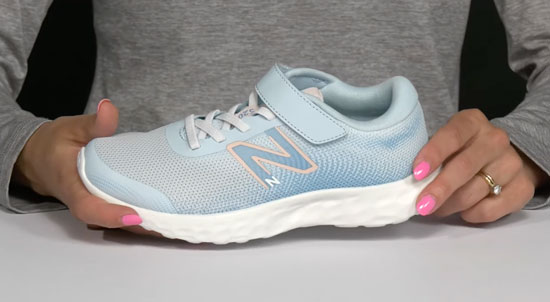
Key Features:
- Order the shoe style Fresh Foam 650 by New Balance on the New Balance website or Amazon.
- Available in medium, wide, and extra wide widths.
- I suggest getting this shoe a whole size larger than your toddler’s current foot size.
7. Shoe Style 2002 by New Balance
The 2002 model by New Balance is another toddler shoe with ankle support offered at a more affordable price point than the 990v6.


Key Features:
- Order the shoe style 2002 by New Balance on the New Balance website.
- Available in medium and wide widths.
- I suggest getting this shoe a whole size larger than your toddler’s current foot size.
Laces vs. Velcro: Which is Better?
Shoes with shoelaces help provide better support and stability compared to shoes with velcro closure. The main reason for this is that shoelaces are always more effective in holding the child’s heels in the correct place, supporting and securing them against the back part of the shoes.
If you chose a shoe with laces, I suggest that you apply a specific shoe lacing technique I came up with that allows toddlers to get maximum support and stability from the shoes.
The Importance of Fitting Your Toddler in the Correct Shoe Size
Getting the right shoe size is crucial to ensure that your toddler receives the full support from their shoes. Ill-fitting shoes can lead to discomfort, blisters, and even exacerbate existing ankle issues. Shoes that are too tight can restrict natural foot movement, while those that are too loose can cause tripping and instability. I created a virtual shoe fitting service that will help you retrieve your child’s shoe size from home.
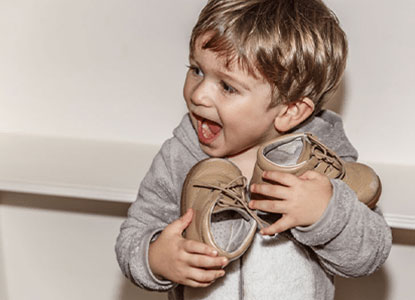
Personalized Shoe Recommendations
Every child’s foot is unique, and what works for one toddler may not be suitable for another. I always encourage parents to contact me for specific shoe recommendations tailored to their toddler’s unique foot shape. By understanding the nuances of each child’s needs, I can guide families toward the best choices for ankle support and overall foot health.
Bonus Resource: Orthotics for Toddlers with Weak Ankles
If after 3 months of wearing a pair of supportive shoes your toddler’s walking gait doesn’t improve, then we might consider fitting a pair of orthotics to provide additional support and alignment for toddlers with weak ankles. Over-the-counter orthotics can be a cost-effective solution for minor issues.
These inserts can be placed inside your child’s shoes to enhance support and comfort, helping to correct alignment and distribute pressure more evenly. I have tried several different kinds of orthotics but there is a specific one I found that is designed to correct the misalignment caused by weak ankles.
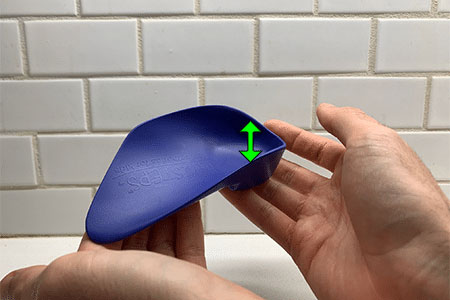
Be Proactive!
I have noticed how certain pediatricians and physical therapists tell parents, “Don’t worry, your toddler will outgrow it”. Sometimes the condition does straighten out by itself, but sometimes it doesn’t. Why would you wait for the condition to resolve on its own when there are simple steps that you can take now? Remember that when the feet are misaligned it usually leads to muscle fatigue while walking and increasingly stiff leg muscles.
If you already tried a pair of shoes that have worked well for your toddler’s weak ankles let us know in the comment section below so other families can benefit from your experiences. By providing the right support early on, parents can help their children develop stronger, more stable ankles, reducing the risk of future complications.

